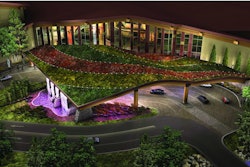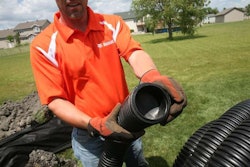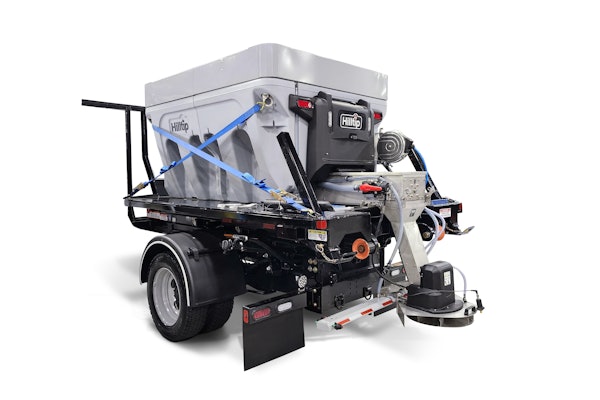Landscape architect carves a niche repurposing materials in imaginative new ways
by Billy R Sims
John Russell bristles when labels such as “green” and “sustainable” are applied to his work. Yet his residential landscape design-build service in Birmingham, Alabama, is noted for its ecological design work and novel techniques for the reuse of landscaping materials onsite.
This site was overgrown with privet. After removing the plants, Russell’s crew uncovered beautiful rock outcrops and an endless supply of boulders. They uncovered bedrock, then used the found rock to build walls, steps, seating and walkways“It’s really about efficiency,” he says. “I like the creative challenge of using materials on hand at a job site. It’s far more efficient to use what you have rather than hauling stuff in and hauling stuff off.
“We’ve developed techniques for the reuse of concrete onsite in landscaping to build walls, tables, benches, stairs and fire pits,” Russell says. “In many job situations concrete must be removed for the creation of a new drive, patio, swimming pool or terrace. Instead of hauling this material to a landfill, we use it to build new features and enhance the landscape.”
Russell’s efforts also extend to salvaging and reusing plant materials. “By using best practices we have a high rate of success,” he says. “Two summers ago during a drought, we moved and replanted 28 three-inch-caliper trees and hundreds of other shrubs and groundcovers on a residential jobsite, losing only a handful of roses and a gardenia.”
How does he overcome clients’ desires to build with all new materials? “First off, don’t be dogmatic,” Russell says. “If a customer really wants a brick wall, give him a brick wall. But usually he can be persuaded to consider reusing onsite materials when he sees photos from other projects we’ve done, and a cost estimate comparing new versus repurposed.”
Best advice for landscapers who want to reuse landscaping materials? “Accurately calculate quantities,” Russell says. “For example, if you plan to tear up a patio and use it to build a wall, you need to calculate how much tonnage you have in the patio and how many square-faced-feet of material you’ll have when it’s broken up. Getting it right will save you lots and lots of headaches, and money.”
For this project, Russell broke up and reused the deteriorated front drive to create walls and terraces in the back yard. The front walk was also cut up to use as serpentine steps. All the natural stone was found onsite Old stepstones and moss rock found onsite were used to create edges and walkways in this naturalistic garden. This Japanese style entry court was made from the old front sidewalk. The walls were made of recycled railroad ties and the entire patio was built on #57 stone for proper drainage









